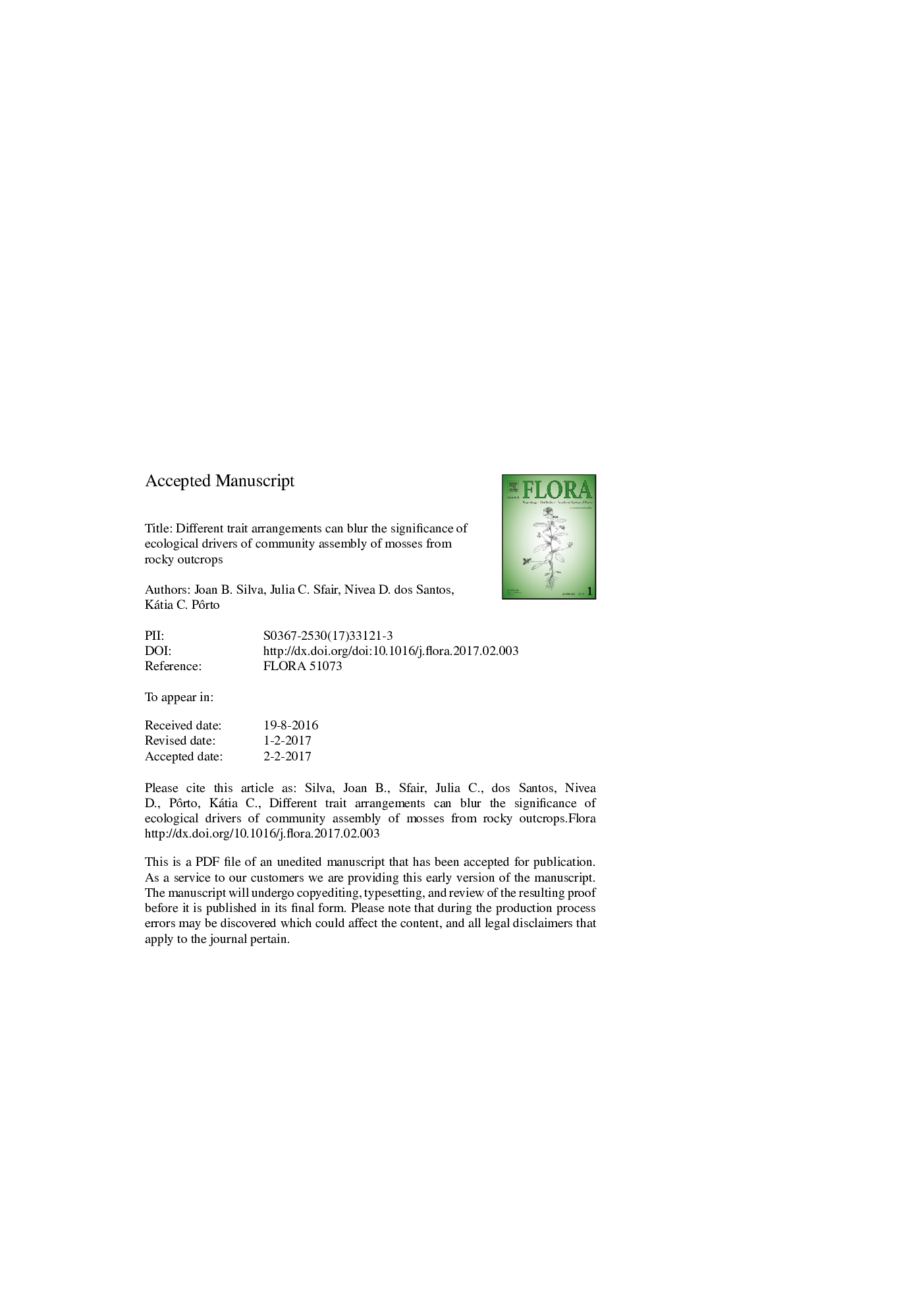| Article ID | Journal | Published Year | Pages | File Type |
|---|---|---|---|---|
| 8470220 | Flora - Morphology, Distribution, Functional Ecology of Plants | 2018 | 32 Pages |
Abstract
Rocky outcrops are distinctive formations in arid and semiarid zones, characterized by the presence of plant species with functional traits related to water deficit and high temperature tolerance. These areas are also characterized by high habitat heterogeneity. We tested three hypotheses related to organization of moss communities in rocky outcrops: 1) trait convergence related to habitat filtering; 2) trait divergence related to habitat heterogeneity; and 3) random pattern of traits related to dispersal limitation. We developed null models to test trait convergence and divergence and related these patterns to habitat filtering and heterogeneity, respectively. Additionally, we also tested for different plant strategies to cope with harsh environments and we related the size of moss' spore to the number of rocky outcrops the species occupy. In spite of the convergence in some traits, this pattern was not related to annual precipitation and temperature seasonality. Moreover, the random trait organization on some outcrops was not related to dispersal limitations of the bryophytes' species. Each community, on the other hand, had different functional compositions, indicating that mosses species have different trait arrangements to cope with environmental constraint, blurring the detection of ecological drivers of community assembly in bryophytes from rocky outcrops.
Related Topics
Life Sciences
Agricultural and Biological Sciences
Ecology, Evolution, Behavior and Systematics
Authors
Joan B. Silva, Julia C. Sfair, Nivea D. dos Santos, Kátia C. Pôrto,
